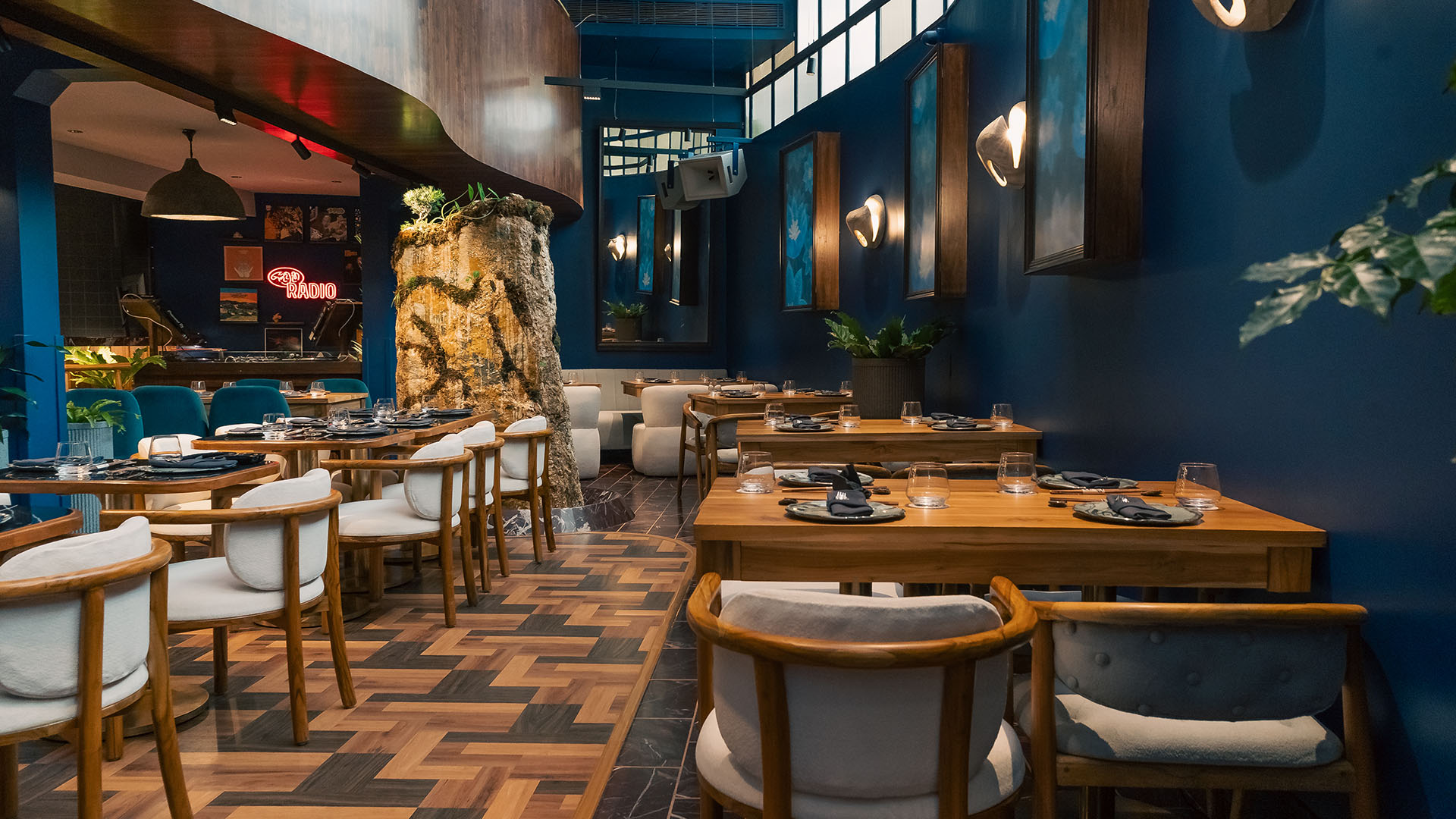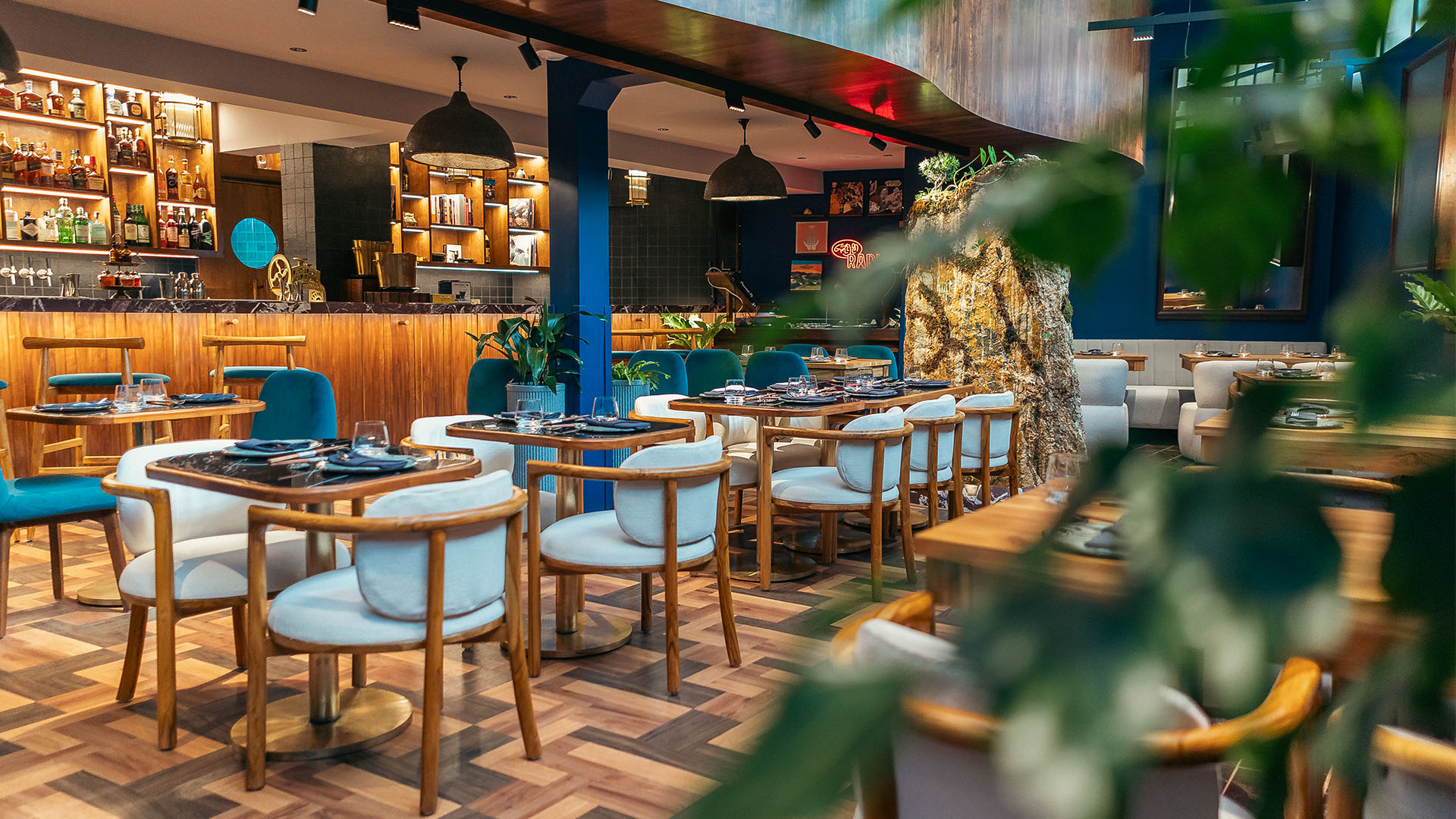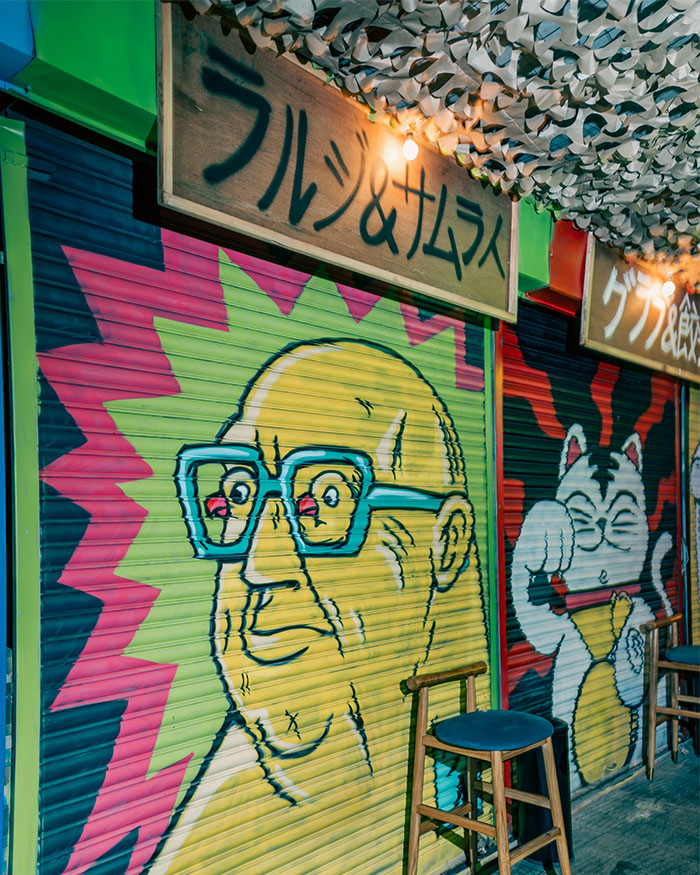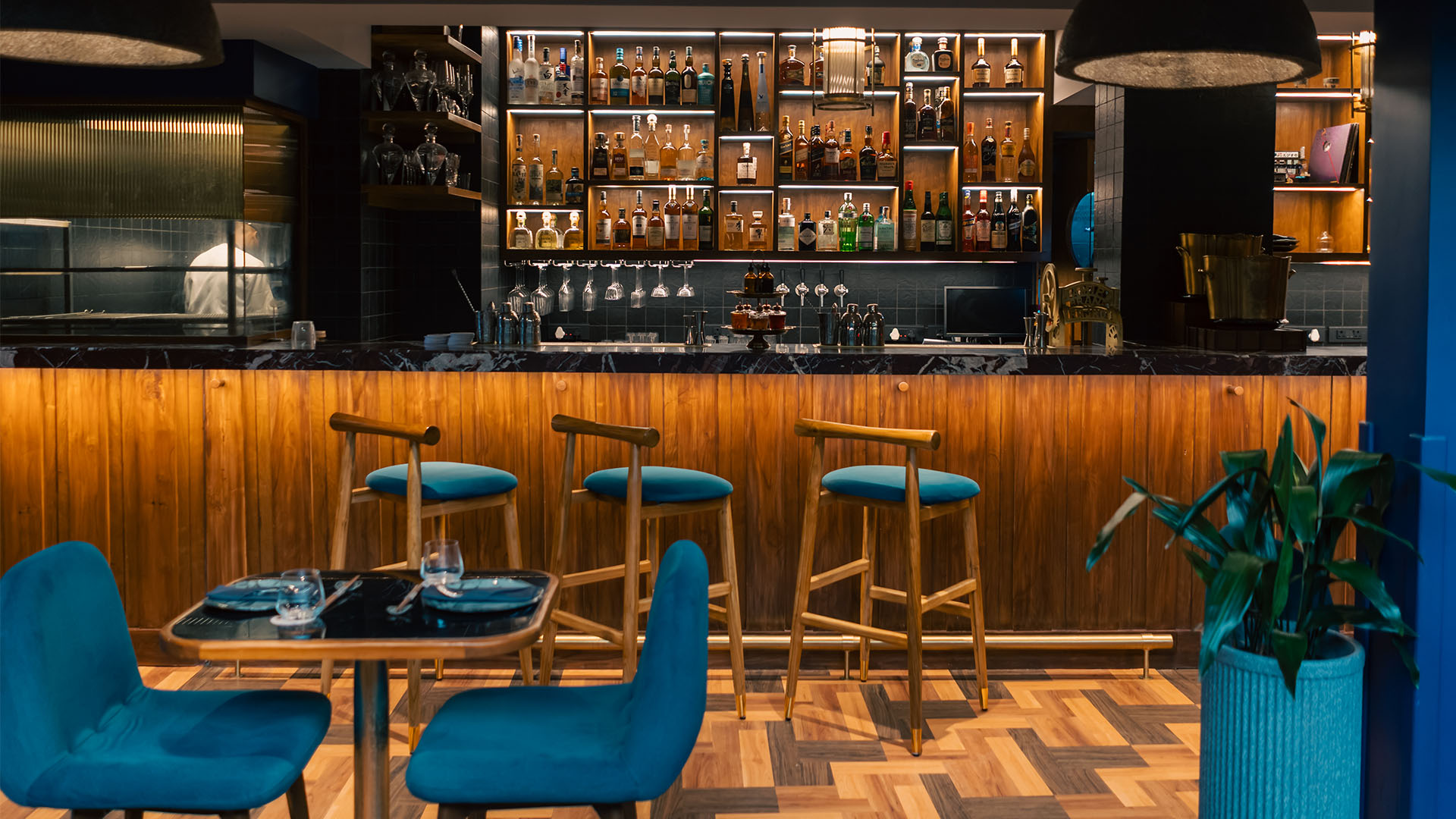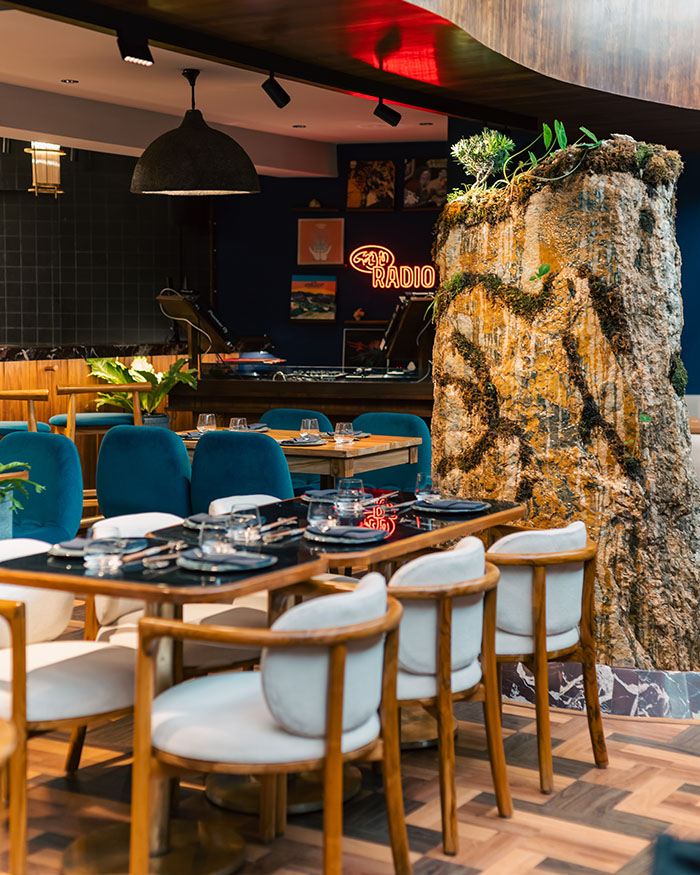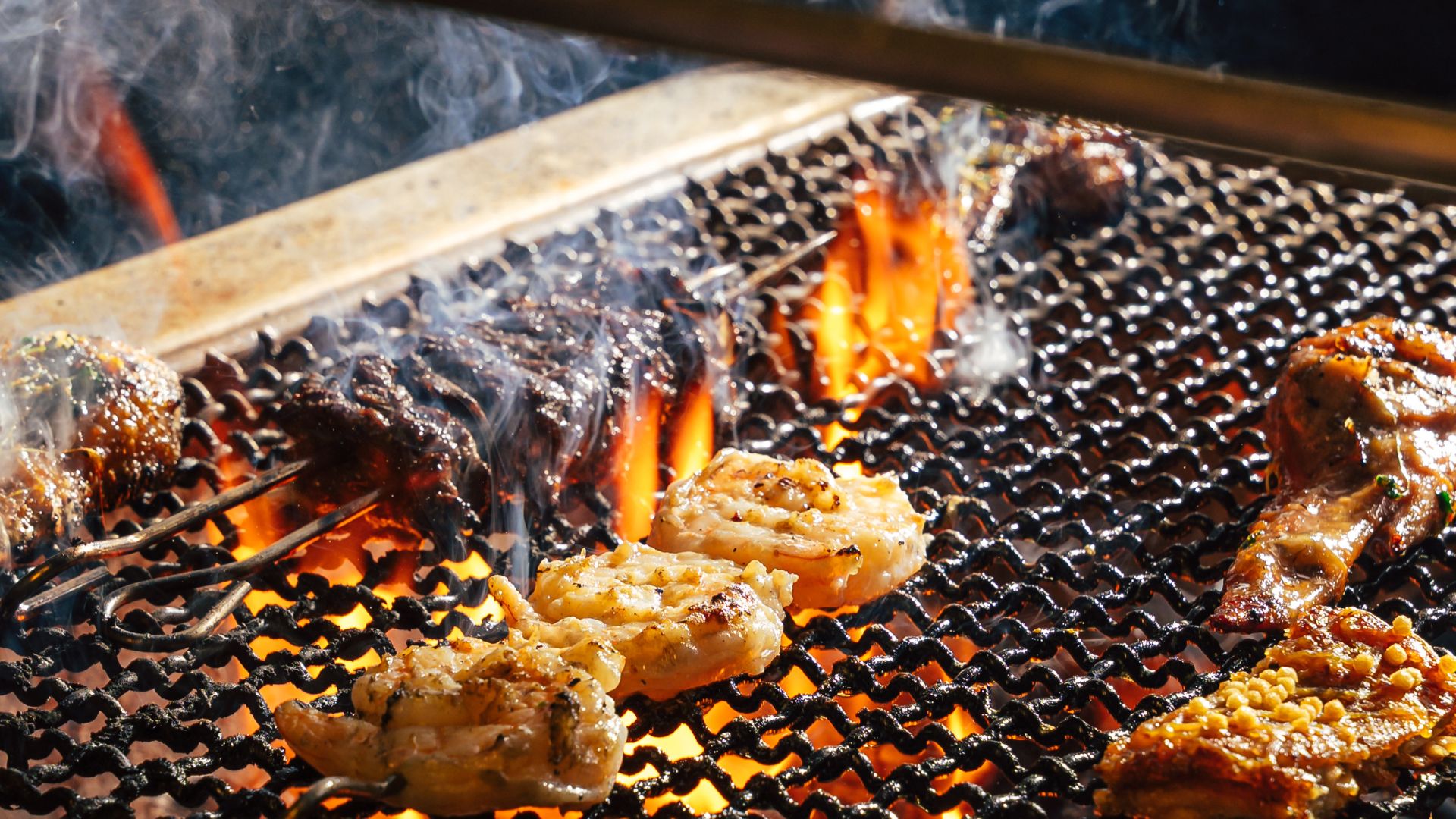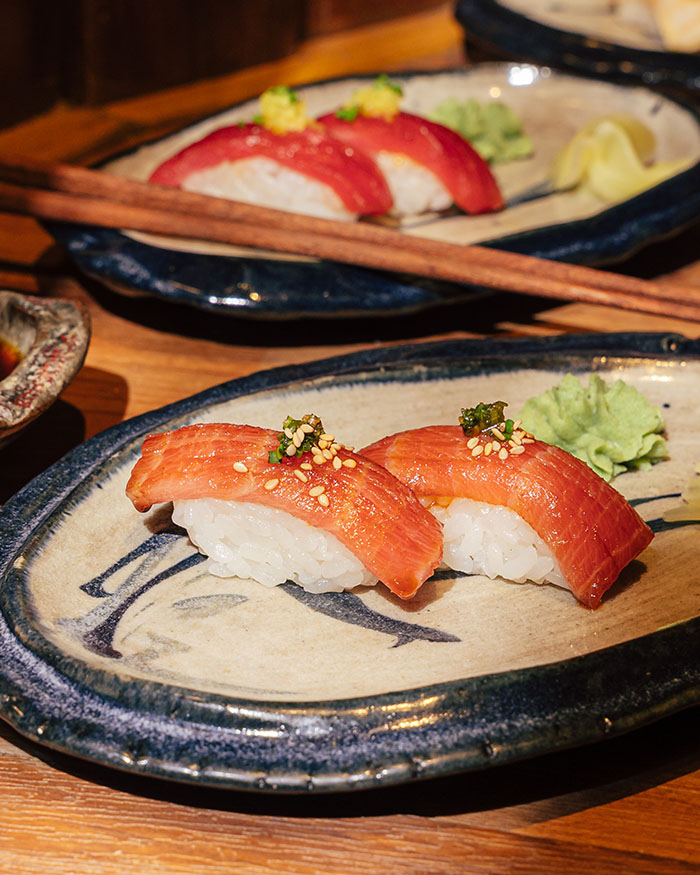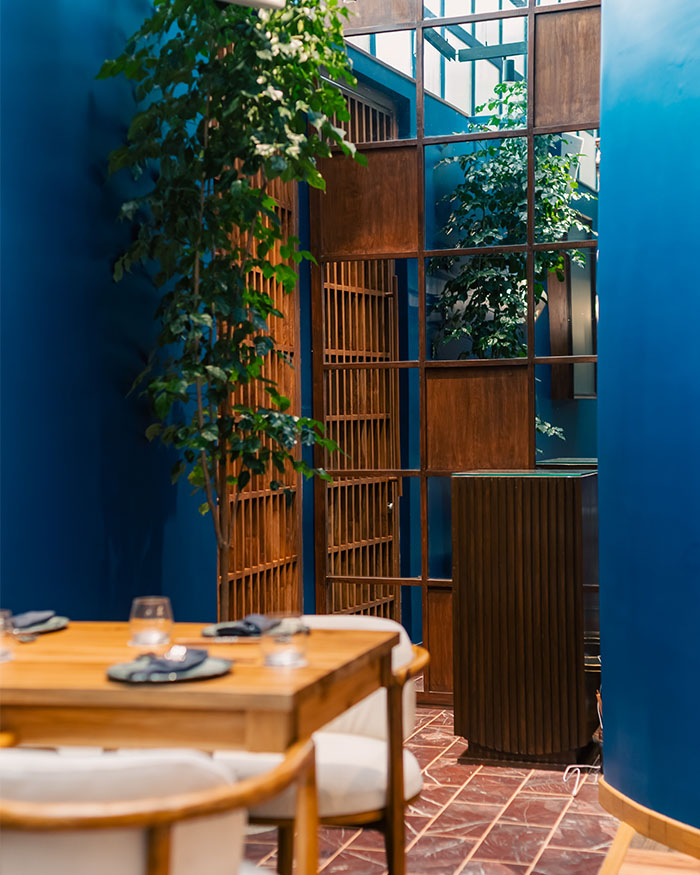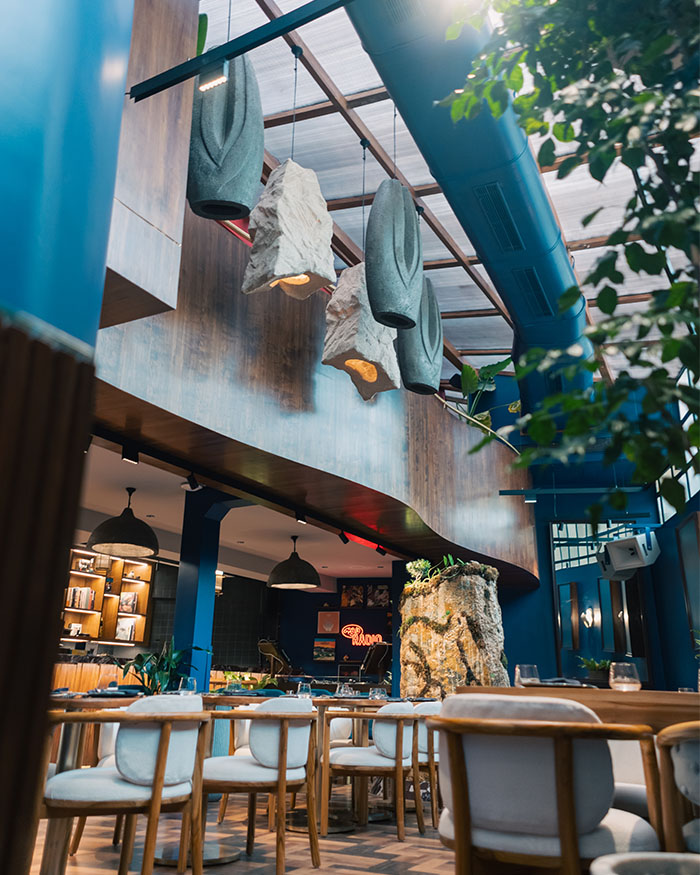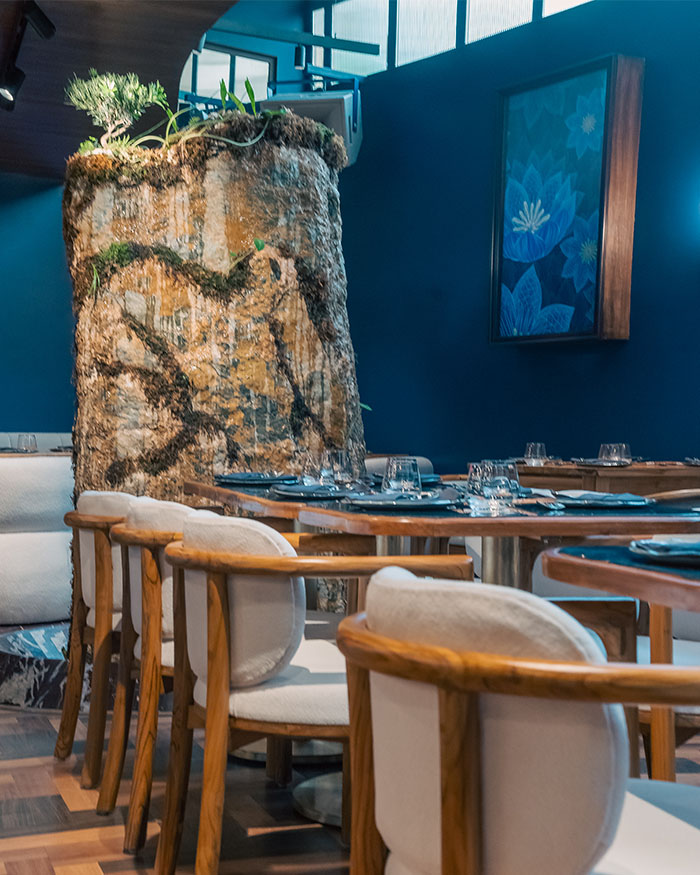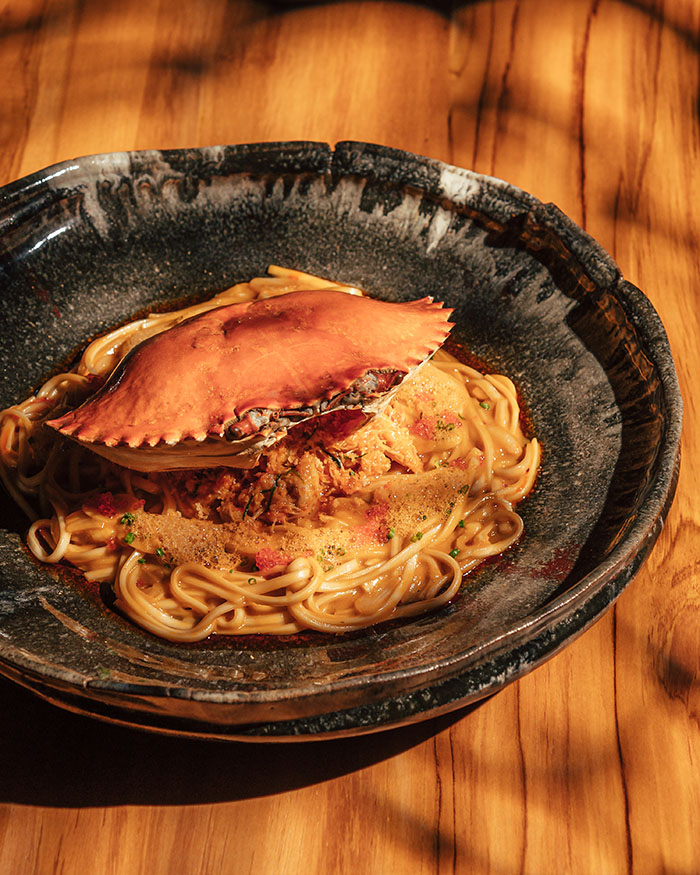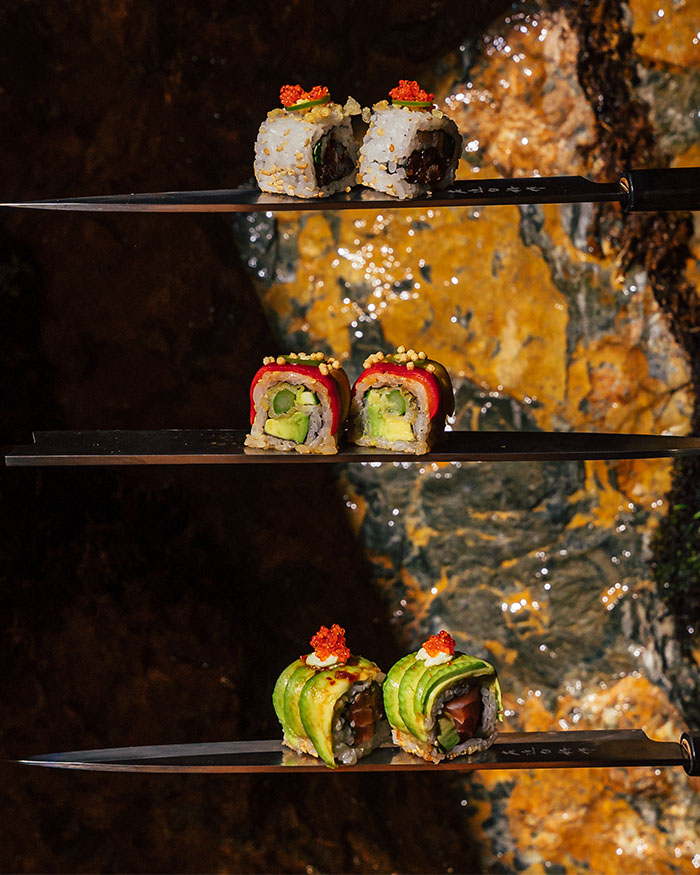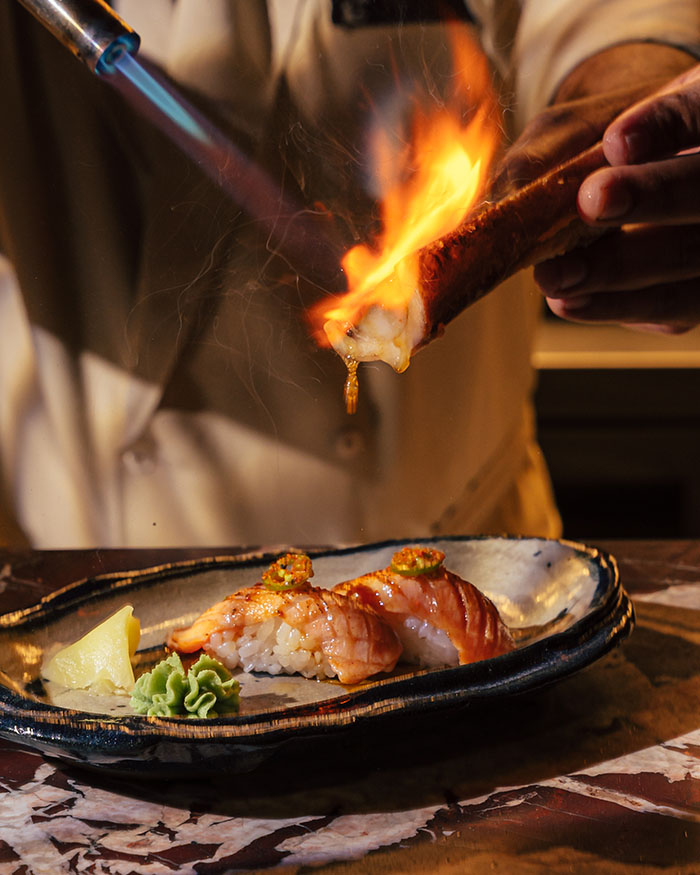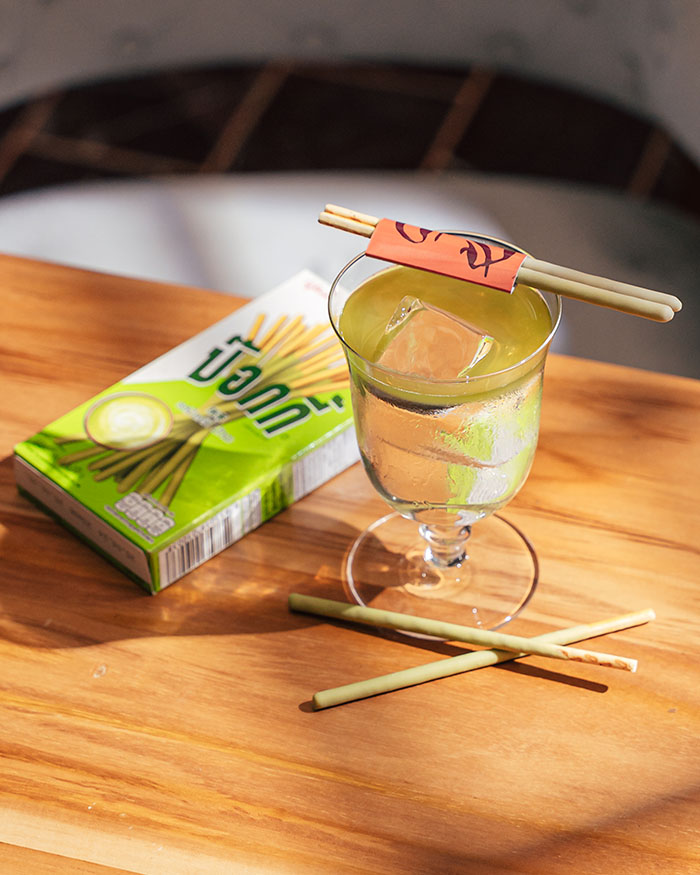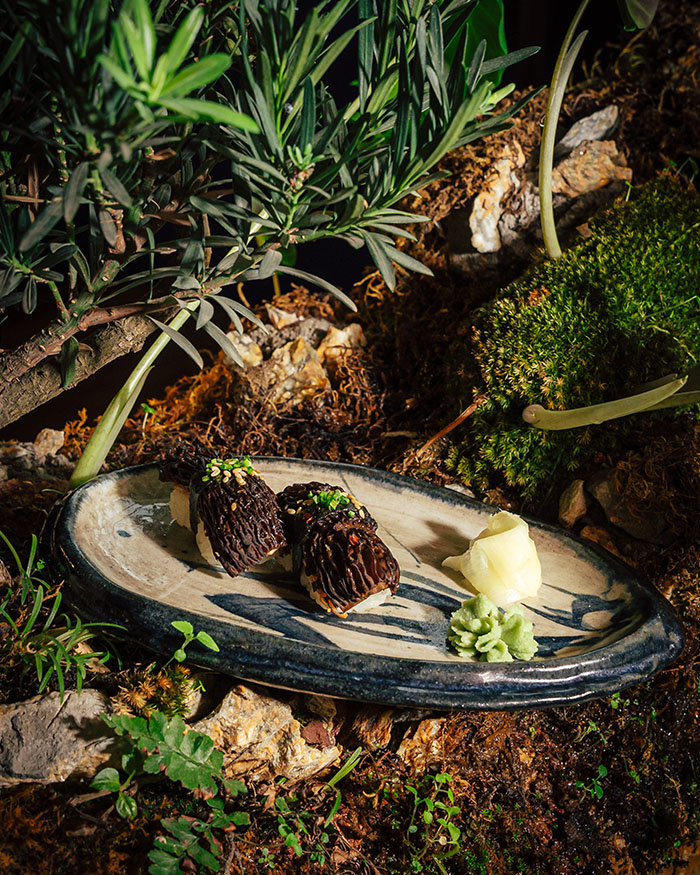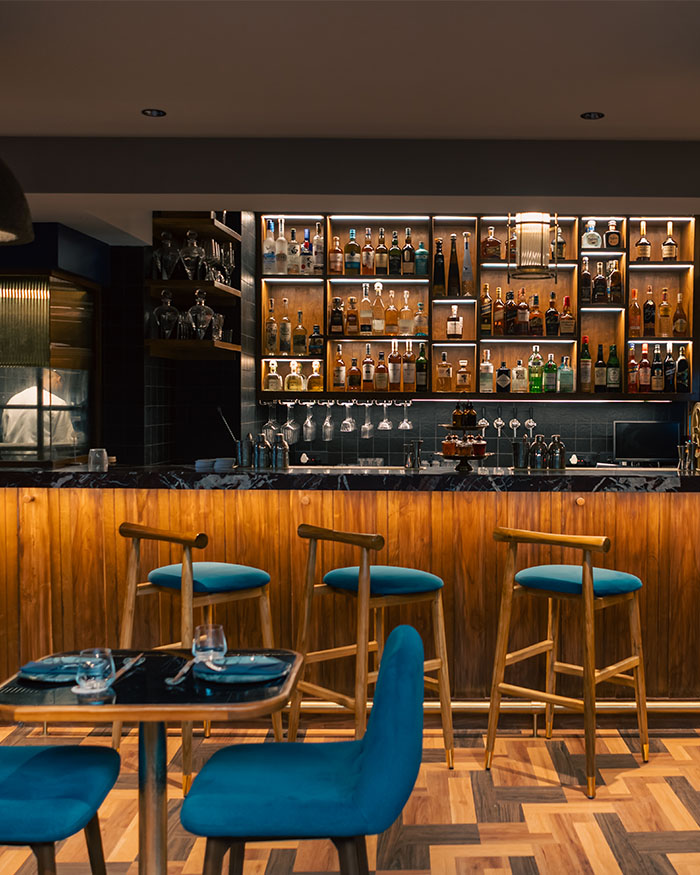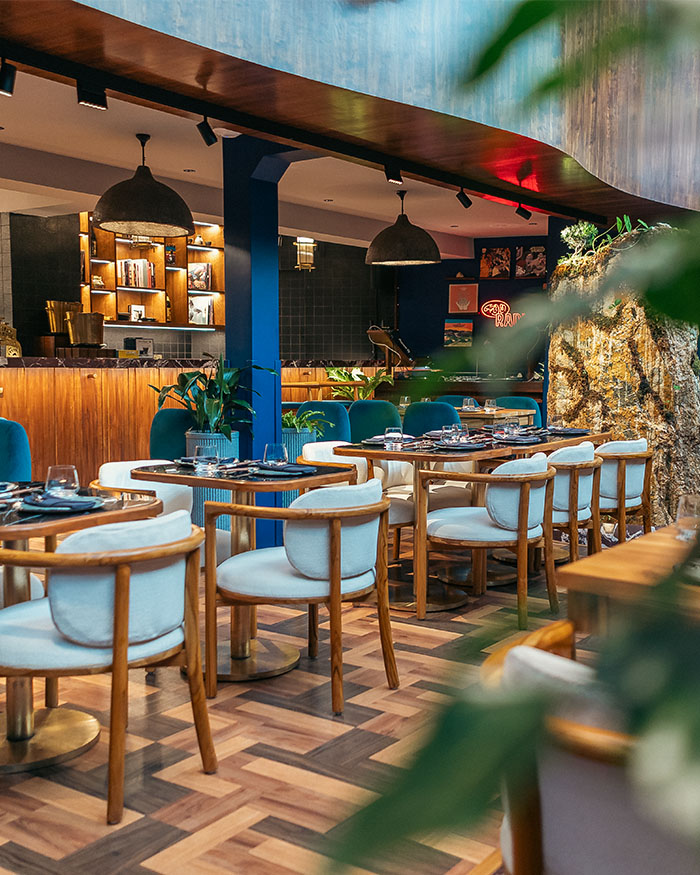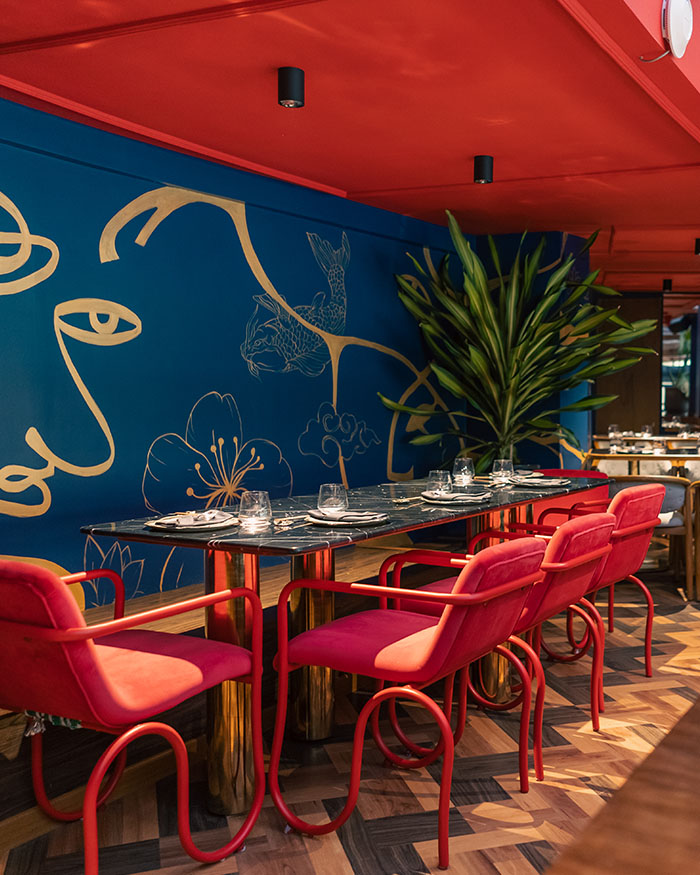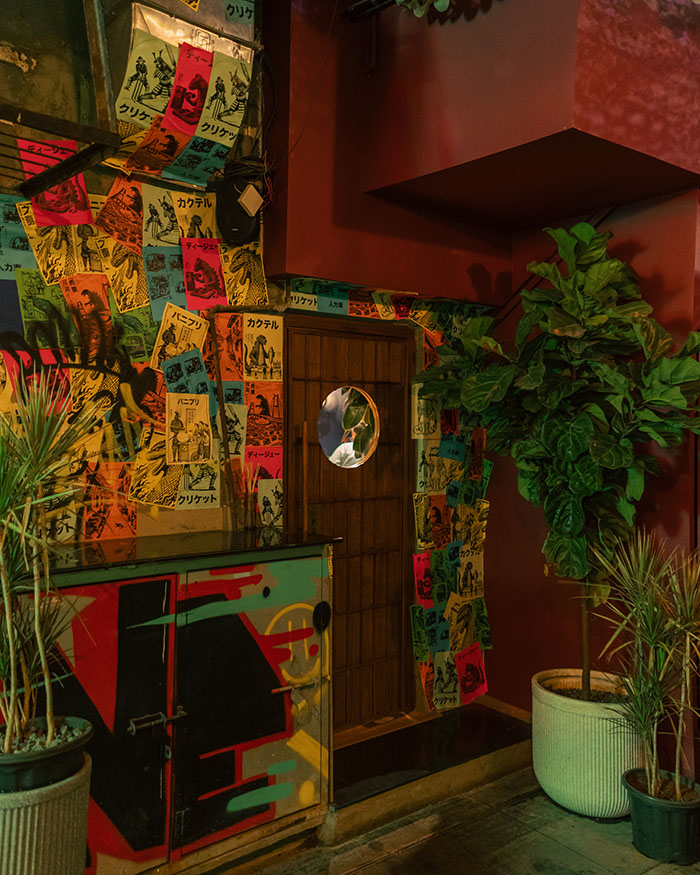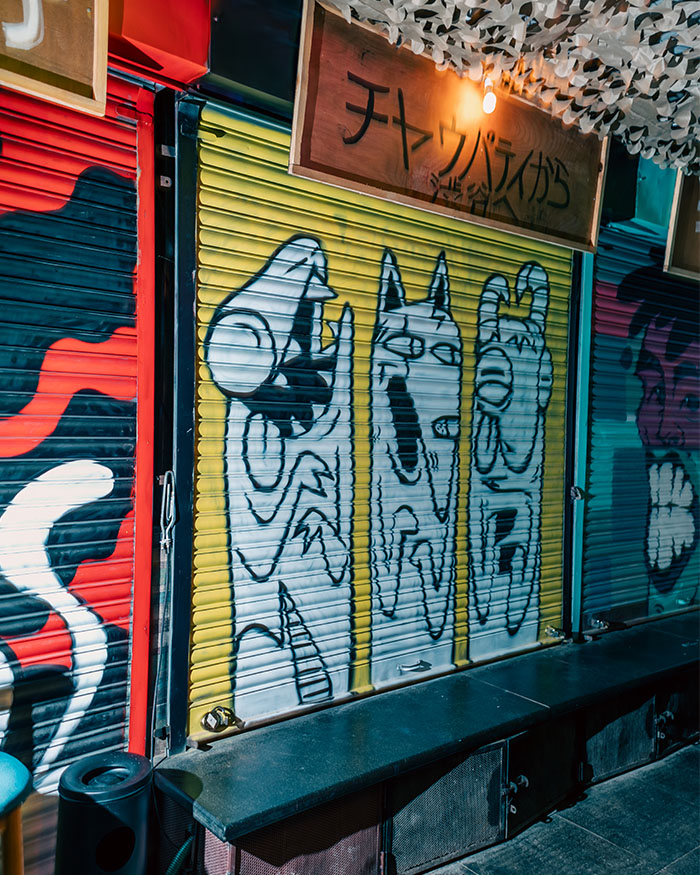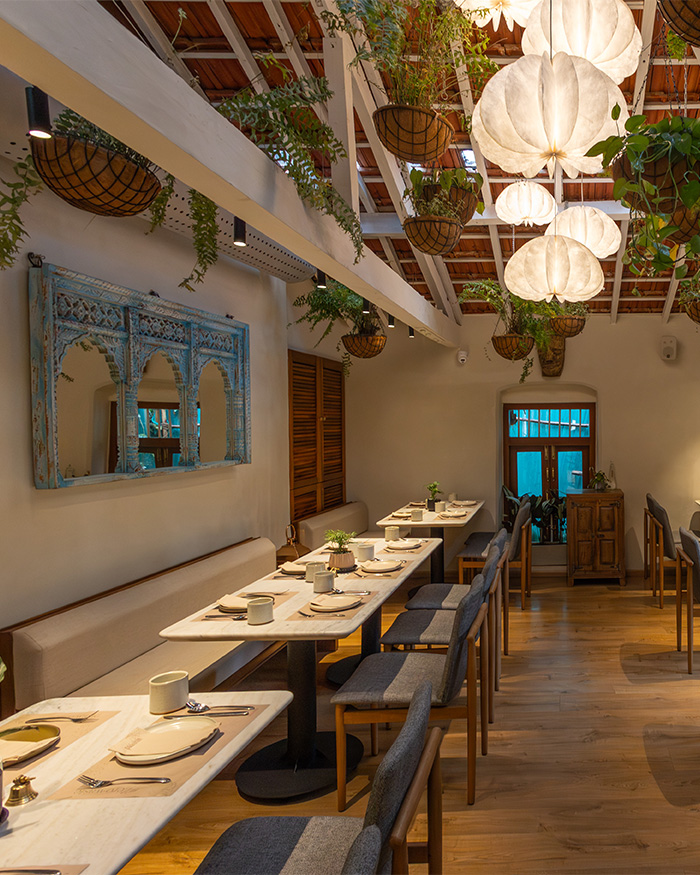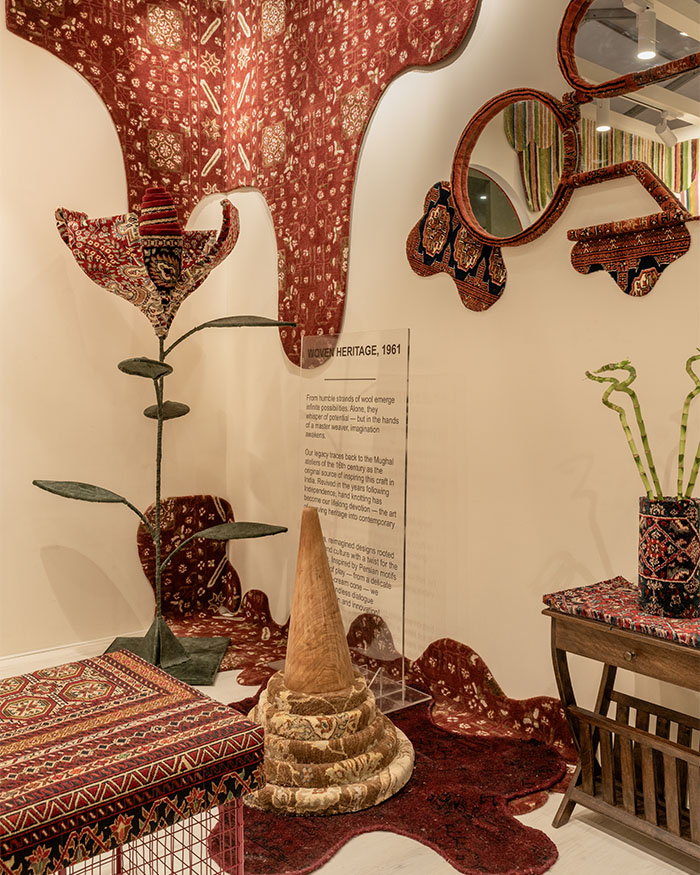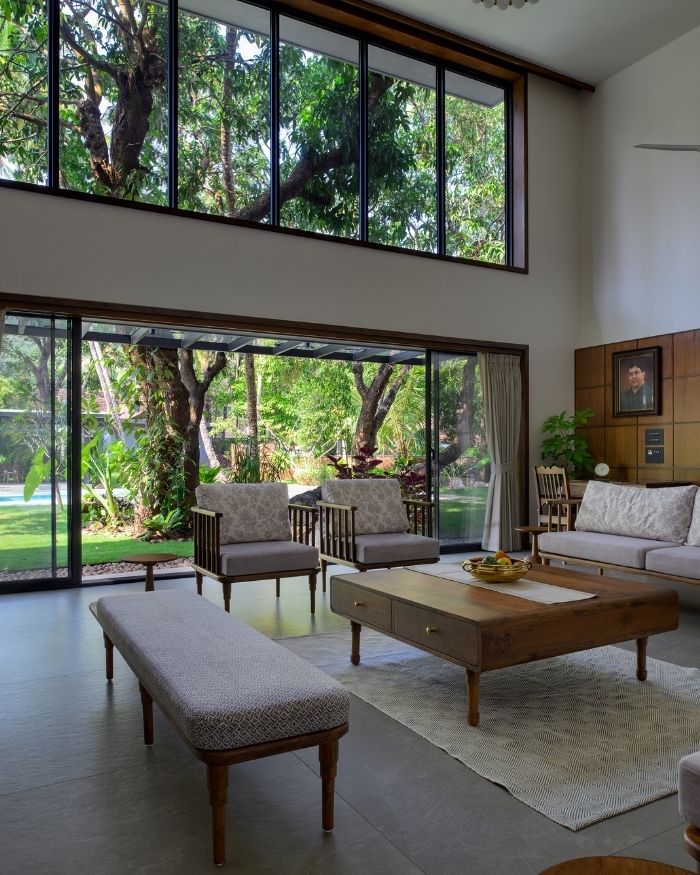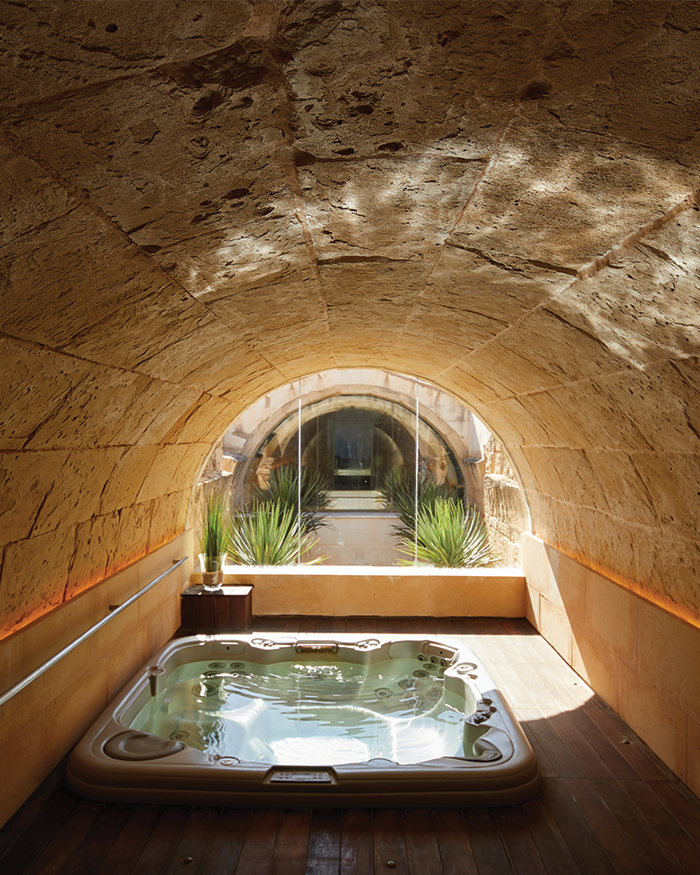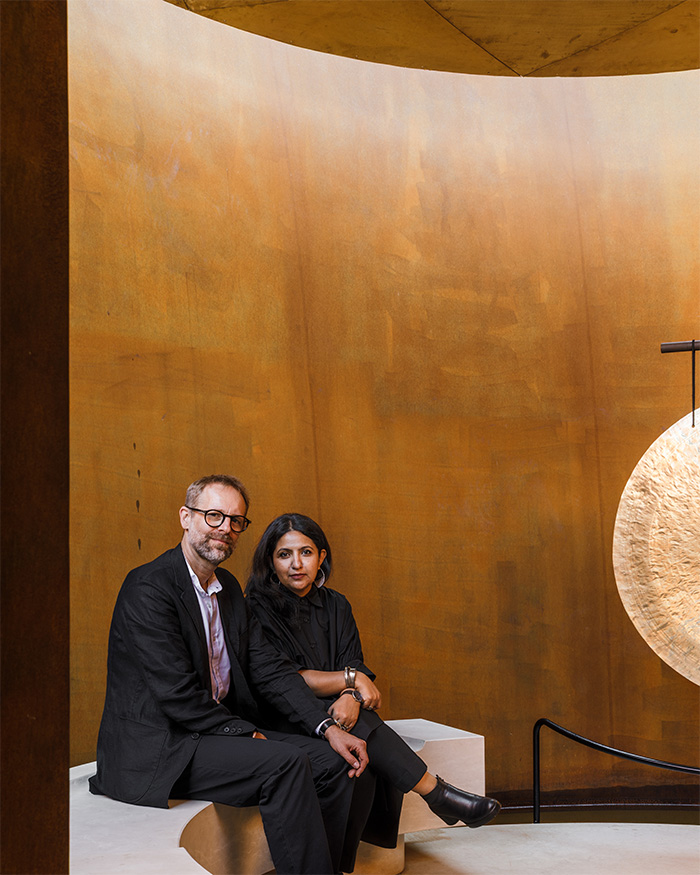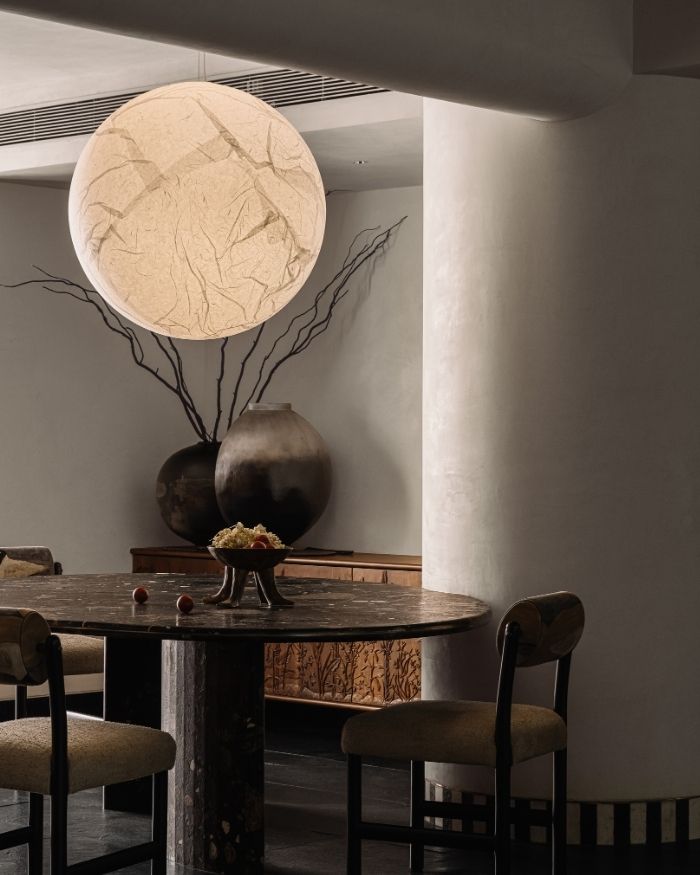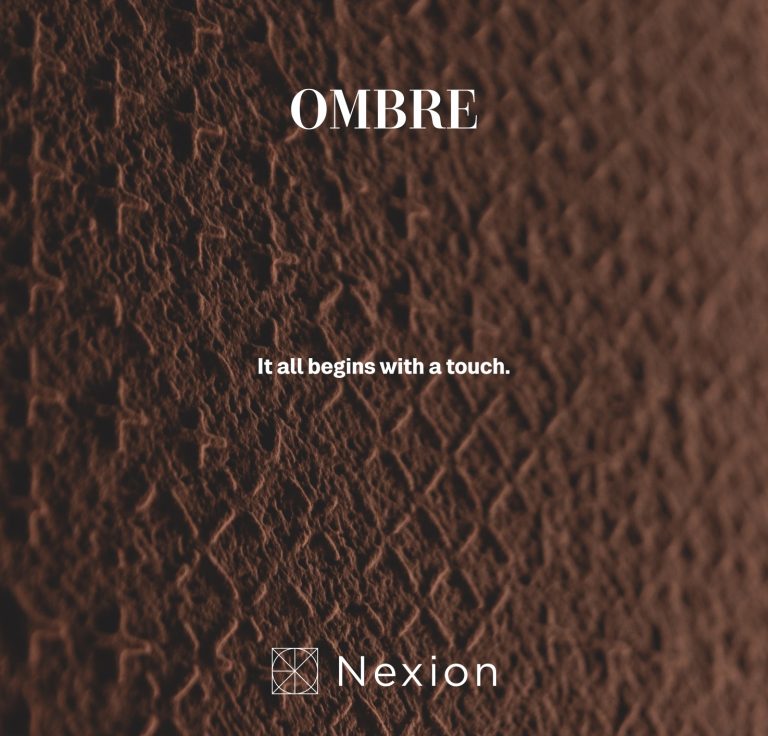Japan, like many Asian countries, has always been slightly predictable. Don’t get me wrong. I barely agree with this statement myself; although the likes of Indianised sushi and matcha, globally located Muji and Uniqlo, the internet visuals of cherry blossoms, manga, ramens and more have made Japan somewhat formulaic. But at Gaijin in Mumbai, I found a new kind of Japan existing in the thrumming folds of Bandra — where my palate and sight were honestly taken by surprise. As chef-partner Anand Morwani says, “The idea for Gaijin came from the feeling of being an outsider who’s deeply curious. I didn’t want to replicate what I saw during my travels to Japan, instead I wanted to reinterpret it.” Co-founded by Karan Gaba and Rohan Mangalorkar, the space is fesigned by Keith Menon of Spiro Spero. The interiors follow no rules, too. Instead, they flow corner to corner with an electric first impression of a restaurant and bar that is familiar yet foreign.
Unlacing the Japanese colour theory first — the threshold before entering inside first catches the eye with the facade’s delicious burgundy-red colour, traditionally called enji-iro, often said to be inspired by Japanese makeup pigments. Reach for the entryway inside and the locally common Shoji doorway appears in front with an evolved twist to it, where the traditional latticework is renewed with mulberry wood veneer, heightening the sense of textural play from the onset.

